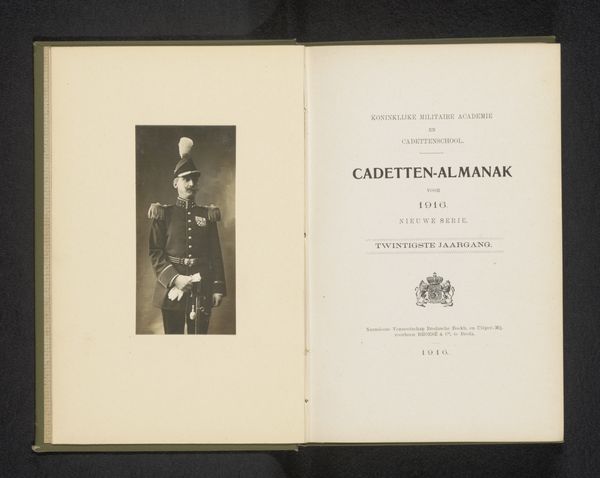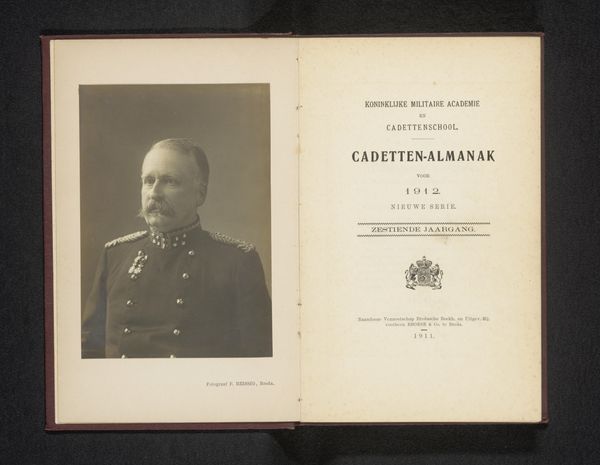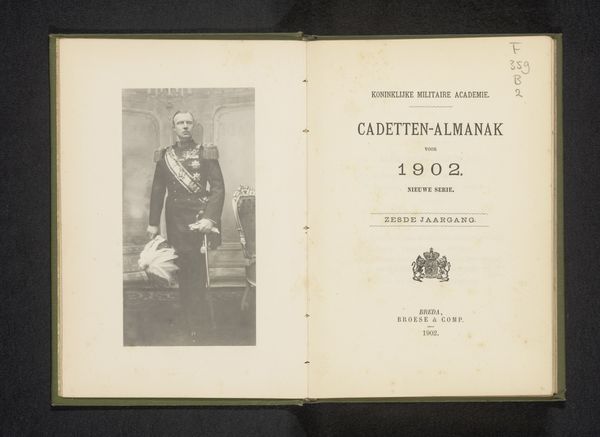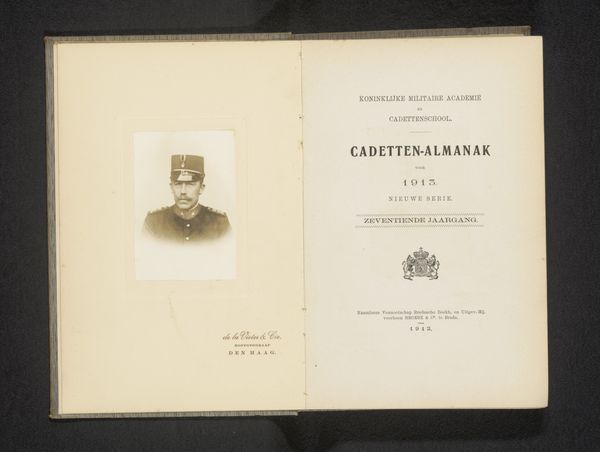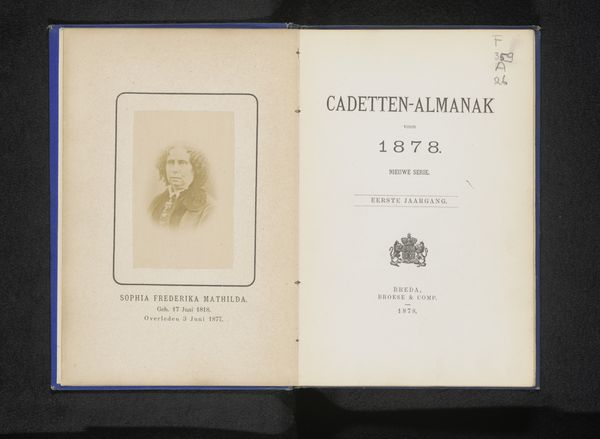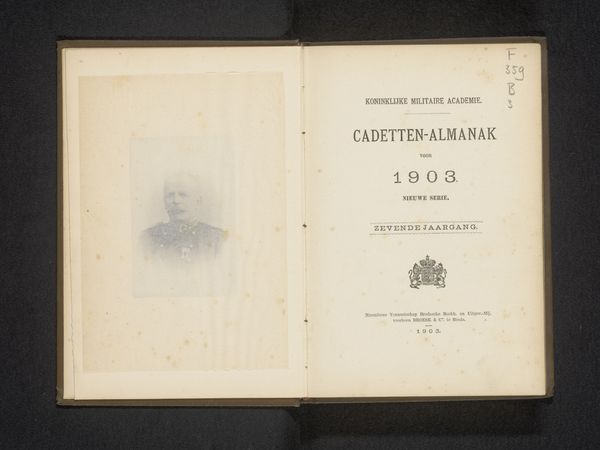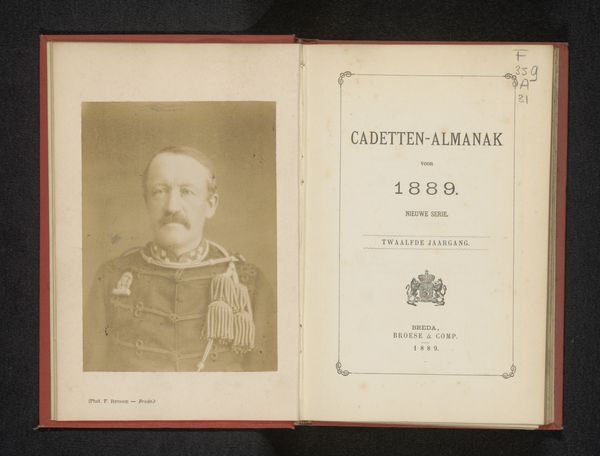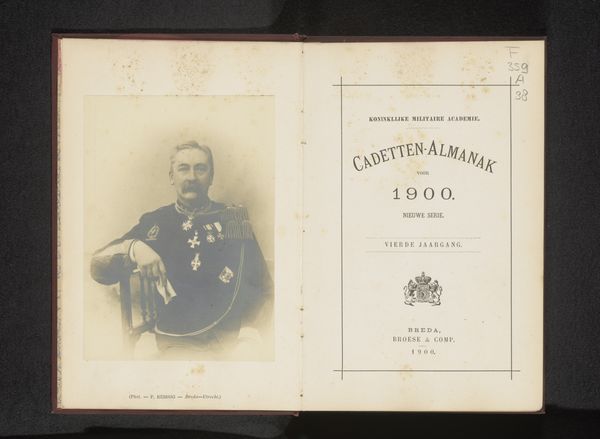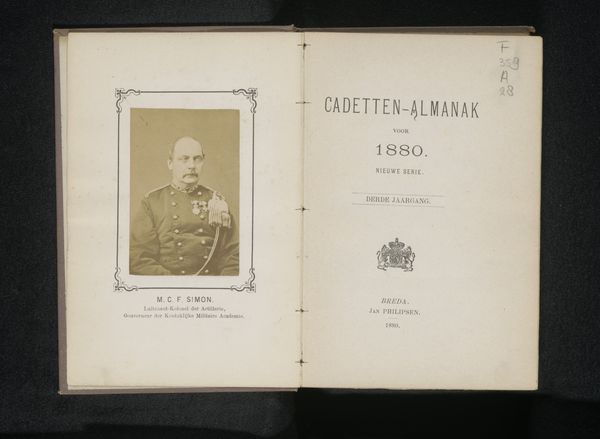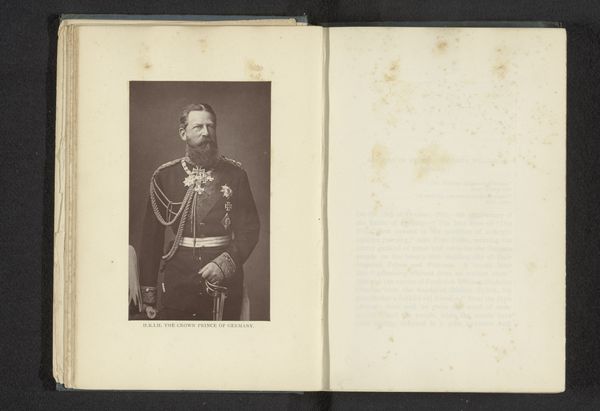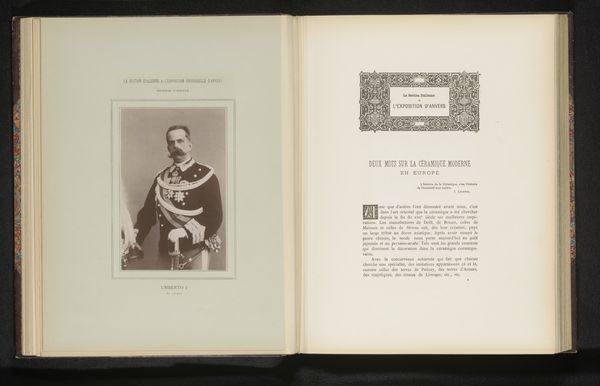
print, paper, photography, albumen-print
#
portrait
#
aged paper
#
homemade paper
#
paper non-digital material
#
paperlike
# print
#
personal journal design
#
paper
#
photography
#
folded paper
#
thick font
#
letter paper
#
paper medium
#
albumen-print
#
historical font
Dimensions: height 216 mm, width 150 mm, thickness 21 mm
Copyright: Rijks Museum: Open Domain
Curator: What a stark contrast in tones—it’s all very serious. The sharp definition of the typeface and portrait suggest authority and tradition, wouldn’t you agree? Editor: Yes, that solemnity leaps out at me too. Here we have an albumen print dating back to 1915, presenting the “Cadetten-almanak”, crafted by Naamloze Vennootschap Bredasche Boekh. en Uitgev.-Mij. It's interesting that it showcases military portraiture paired with printed text. Curator: Considering this piece’s existence during the First World War, one can consider the portrait on the left as representing the traditional figure of authority during wartime, and how war and gender expectations converge in that era. The “Cadetten-almanak” was thus not only an annual register for the Royal Military Academy's Cadets School, but also a testament to the state's authority during that particular historical context. Editor: Indeed, observe how the composition divides the spread—the visual weight of the portrait versus the clean typography. The rigid font mirrors the perceived rigidity of the militaristic role in society, with its very thick and commanding lines of text. I notice the paper looks old and the image feels aged; I think this evokes an element of history that speaks of war being a recurring and defining element of the modern era. Curator: Exactly. The formal pose and meticulously rendered details of the uniform and accoutrements speak volumes about hierarchy and national identity at that specific point of time, with strong emphasis put on order and control during periods of upheaval and great geopolitical tension. It acts as an archive of a particular class during this point in time. Editor: And the symmetry and balance here are also intriguing—there’s a desire to contain history in such an objective, neutral fashion through this deliberate design. Almost as a form of passive visual war strategy. Curator: I would say I come away from looking at this portrait and text very thoughtful of war, national identity, and masculine expectation in that day and age. Editor: Agreed, there is much contained between the covers of this seemingly simple printed matter, revealing the importance of form to relay much about state power, authority, and social values.
Comments
No comments
Be the first to comment and join the conversation on the ultimate creative platform.
